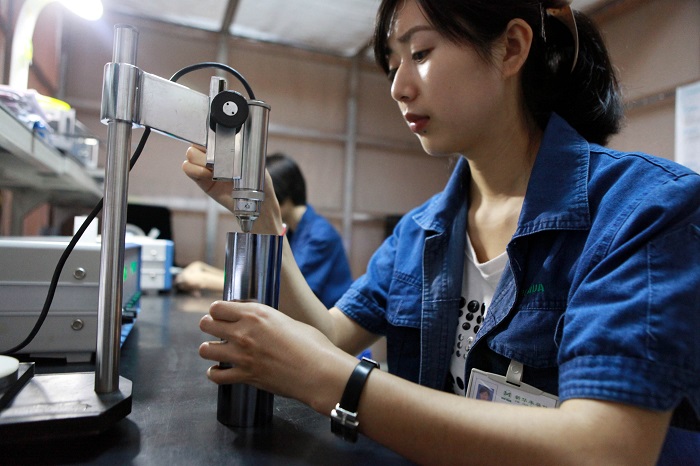world news online news
China’s factory activity shrank for a second straight month in November, official data showed Wednesday, as large swathes of the country were hit by Covid-19 lockdowns and transport disruptions. online news
The Purchasing Managers’ Index (PMI) — a key gauge of manufacturing in the world’s second-biggest economy — came in at 48.0, down from October’s 49.2 and well below the 50-point mark separating growth from contraction, according to data from the National Bureau of Statistics (NBS).
China has insisted on its zero-Covid policy of stamping out outbreaks with strict quarantines and mass testing even as infections reached record highs this month, dragging down demand and business confidence.
“In November, impacted by multiple factors including the wide and frequent spread of domestic outbreaks, and the international environment becoming more complex and severe, China’s purchasing managers’ index fell,” NBS senior statistician Zhao Qinghe said in a statement.

The manufacturing PMI has been in contraction territory for all but four months of the year so far, as a summer of heat waves was bookended by severe Covid lockdowns in major cities during the spring and autumn.
Zhao said domestic outbreaks in November caused “production activity to slow down and product orders to fall”, noting “increased fluctuation in market expectations”.
Activity fell at businesses of all sizes during the month, with the PMI for small enterprises hit hardest at 45.6.
The non-manufacturing PMI came in at 46.7 points in November, also reflecting a contraction in activity and down from 48.7 points in October.
Zhao said that for transport, accommodation, catering and entertainment in particular “the total industry business volume fell significantly”, as “some regions saw a relatively large impact from the pandemic”.
Chinese leaders have set out an annual economic growth target of about 5.5 percent, but many observers think the country will struggle to hit the target, despite announcing a better-than-expected 3.9 percent expansion in the third quarter.
Meanwhile, rare nationwide protests have erupted among a population exhausted after three years of the zero-Covid policy, while authorities offered mixed messages on transitioning away from the strategy.
tjx/reb/ssy
© Agence France-Presse. All rights are reserved.
world news online news
Notes from APS Radio News
For example, in the US, which was one of the countries most affected by the virus, the average mortality rate has been .07%, according to Statista.
Statista is an award-winning service that compiles and analyzes various types of data.
Its clients include corporations and governments.
It’s been reported that in the US, for most age groups, the recovery rate has been 99%.
Dr. John Ioannidis, a physician-scientist at Stanford University and a specialist in evidence-based medicine, found that even among the elderly, the risk of dying from the virus was low.
In October of this year, DailySceptic.org had included this information it published in an article about Dr. Ioannidis:
In the new study, which is currently undergoing peer-review, Prof. Ioannidis and colleagues found that across 31 national seroprevalence studies in the pre-vaccination era, the average (median) infection fatality rate of COVID-19 was estimated to be just 0.035% for people aged 0-59 years and 0.095% for those aged 0-69 years. A further breakdown by age group found that the average IFR was 0.0003% at 0-19 years, 0.003% at 20-29 years, 0.011% at 30-39 years, 0.035% at 40-49 years, 0.129% at 50-59 years, and 0.501% at 60-69 years.
In various countries that imposed lockdowns and restrictions in 2020 and 2021, there have been increases in the number of suicides, instances of drug abuse, alcoholism, domestic abuse and instances of deferred medical care.
Millions of businesses were shuttered; many of those businesses closed permanently, resulting in shortages of goods and services


